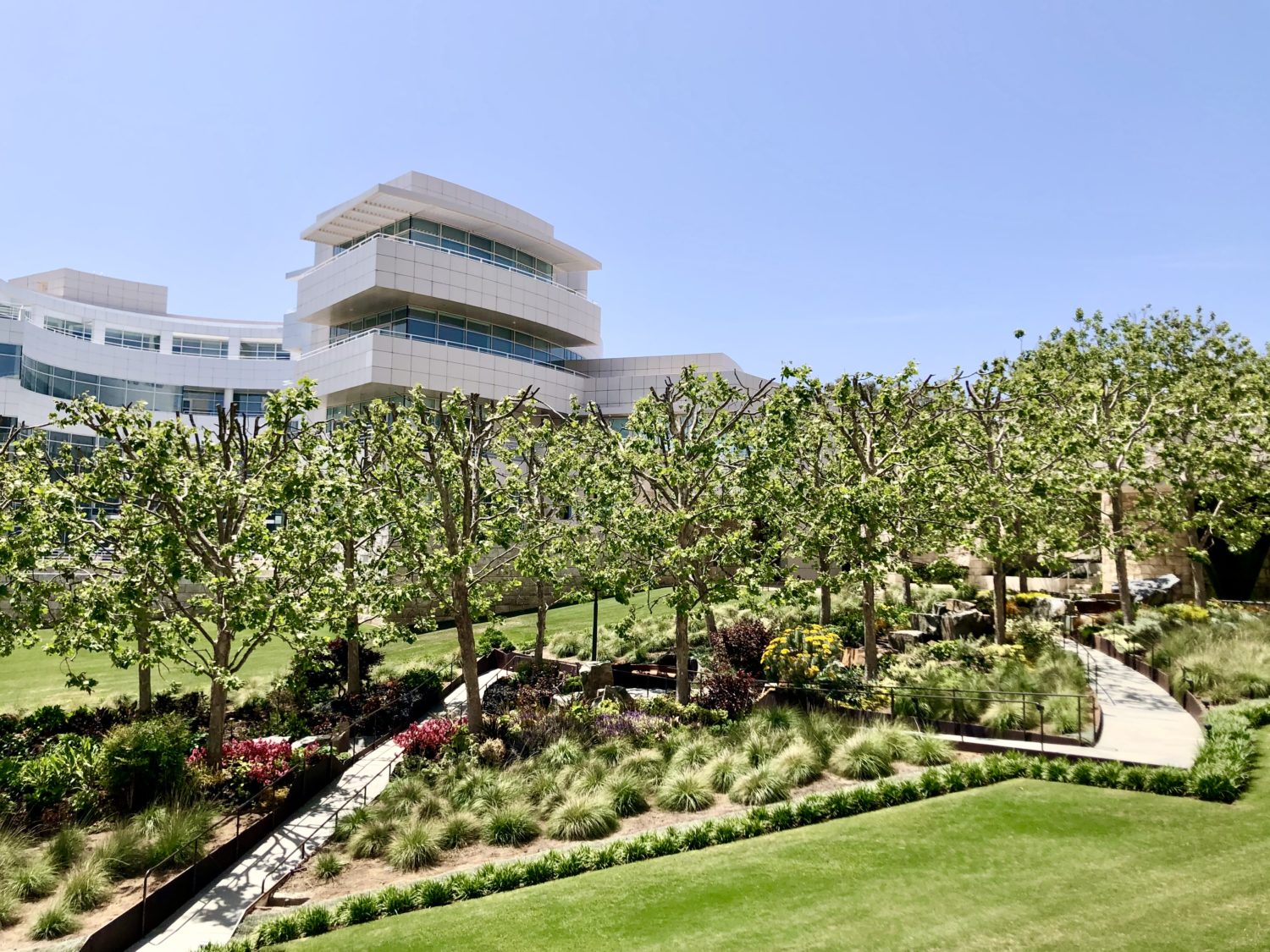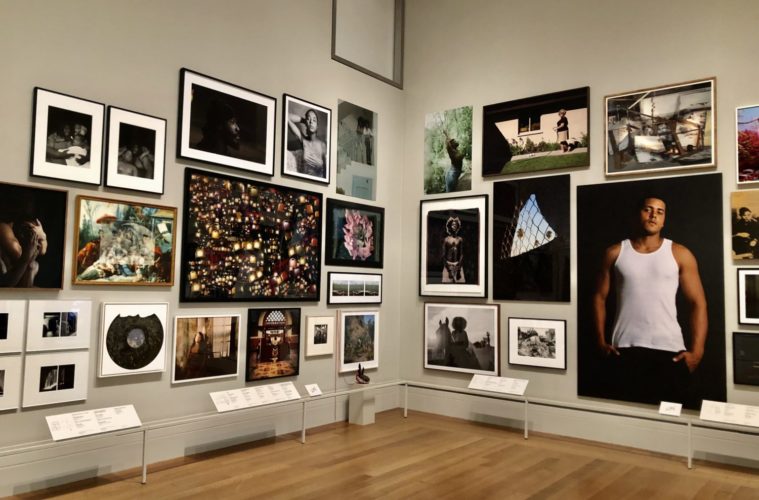As visitors return to area museums, one of the most anticipated reopenings has been the Getty Center. Well, it’s open now, and the good news is that its grounds, gardens, and great views are in better shape than ever. Renovations, gentle caretaking and a year of careful horticulture have made the place sparkling, verdant and gorgeous – not to mention the heart’s deeper fondness for the absent. Visiting now after this past year is an experience that hits the eyes and the body just right – but there’s also plenty of food for the mind.
With its grand encompassing of outdoor spaces and the still free but now timed-entry ticket system plus rules about capacity and flow, it feels like a softer return to museum-going than some of the more crowded, entirely indoor spots. Its slate of current exhibitions and reinstallations on the whole highlight the more luxurious, sumptuous habits of art collecting and the opulent design aesthetics of bygone eras. It’s been a long time since the decorative arts pavilions held such mystique, mystery and allure to the casual visitor, but those fantasy interiors and vignettes are full of detail and delight.

Pamela J Peters, Viki Eagle at Union Station, 2016 (in Photo Flux: Unshuttering L.A. at the Getty Center)
At the same time, all this palatial gilding also remerges into our social conscience as a temple to the cultural ambitions of money, the predilection for performative acquisition among the wealthy, and the perennial influence of oligarchs on the pathways and pantheons of art history. As wonderful as it is, these days it can be impossible to divorce indulgence in this pageantry and the attendant institutional gravitas from a very real awareness as to how that money was made, by whom, and to what ends it was subsequently deployed.
It is in this historically shifting context that an expertly constructed exhibition of modern and contemporary photography from Los Angeles takes hold at the center of the campus. Photo Flux: Unshuttering L.A. features work by 35 artists, mostly people of color, who as curator jill moniz writes, “challenge ideals of beauty, representation, cultural capital, and objectivity.” Assembled in support of the Getty Unshuttered youth photography program, the show’s mission to impart a perspective on the practice of photography centered in personal and community narrative and social critique resonates not only with the teens in the program, but with anyone who spends time in this remarkable salon-style installation.
Todd Gray’s early work casting Muhammad Ali as a larger than life social justice warrior; Harry Gamboa, Jr.’s cheeky and utterly original unconventional and exuberant neighborhood self-portrait; Andrea Chung’s poetic and materially rich meditation on the oceanic subconscious and the plural significances of trans-Atlantic trade in American history; April Banks’s psychologically charged constructions of identity in race and gender; Texas Isaiah’s assertive yet gentle recentering of the body in this conversation; and Toyo Miyatake’s image from Manzanar showing the resilience of the human spirit among the ruins of a violently vindictive and failed social policy – these are just some of the most impactful works included.

Albert Chong, Coronation of a Black Queen, 1998 (in Photo Flux: Unshuttering L.A. at the Getty Center)
The show focuses on historical and contemporary pieces in which the experiences of people of color are explored, depicted and taken on their own terms while also set against the backdrops of racism, the struggle for social justice, and the embodied rights of self-determination and fully realized potential. Much of this work was created as this city was being reconfigured and constructed by forces beyond the control of the local communities, in media narratives of riots and amid nefarious practices in urban planning and real estate as well institutionalized police violence that were – and still are – actively harming and excluding those communities.
As this show movingly amplifies, while at the present inflection point in public consciousness that is showing some promising signs of real change, this is a history that proves the Faulkner quote, “The past is never dead. It’s not even past.” It also demonstrates the power of the medium of photography to document and reimagine lived experiences in a way that prompts critical thinking and engenders personal empowerment. Experiencing the multilayered impact of this exhibition at this time and in this place is its own kind of education.
For more information and to plan your visit, go to: getty.edu.

The Getty Center (Photo by Shana Nys Dambrot)
Advertising disclosure: We may receive compensation for some of the links in our stories. Thank you for supporting Irvine Weekly and our advertisers.

